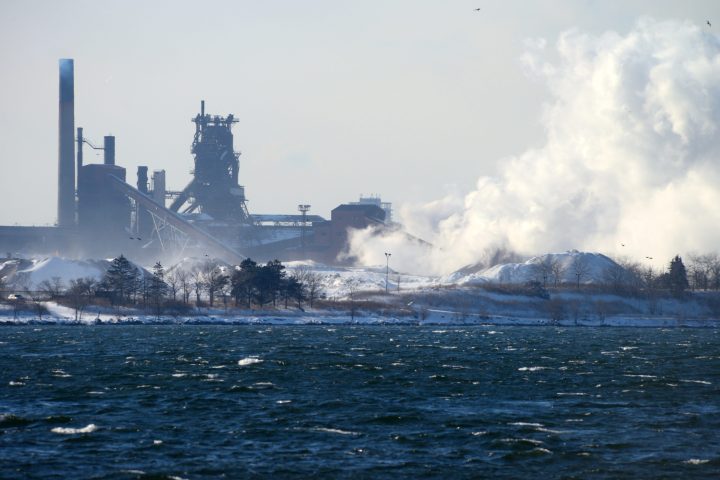
A year after losing its court battle over the federal carbon tax at Canada’s supreme court, the Ford government appears to have capitulated and is raising the price of carbon for industrial polluters under its own emissions program.
A regulatory proposal amending Ontario’s emissions performance standards (EPS) shows the price per tonne of carbon from industrial emitters will balloon from the current $40 per tonne to $65 in 2024 and spiking at $170 in 2031.
The changes will mean Ontario will apply the same carbon pricing that Premier Doug Ford spent years lamenting, ensuring that the province is in line with federal regulations while maintaining some control over carbon pricing in the industrial sector.
Read more: Canada reluctantly approves Ontario and New Brunswick carbon prices for big emitters
Read More
While the proposed price on carbon would only apply to industrial polluters — not the carbon tax paid by consumers on things like gasoline — experts believe the costs could affect prices of some goods in a province already struggling with the high cost of living.
“The proposed changes are so that Ontario’s rules are compliant with the federal carbon pricing rules,” said Jessica Green, a professor at the University of Toronto’s school of the environment and political science department. “Producers then have the choice of whether/how much to pass those additional costs down along the supply chain.”
Environment Minister David Piccini said that, while the government is “not supportive” of the carbon price, the province has no choice but to meet the federal government’s policy.
“We have a supreme court ruling on this,” the minister told Global News at Queen’s Park. “We have to meet the (federal government’s) benchmark, but we have a made-in-Ontario solution that works for Ontario industry.”
That solution, Piccini said, comes in the form of a “dial” which is firmly controlled by the Ford government.
Piccini indicated the province can dial down the carbon pricing pressure on certain industries that are unable to meet their targets within a given timeframe — as long as the overall federal benchmarks are being met.
The province would still be beholden to the federal government’s benchmarks on the price per tonne of carbon — $170 by 2031.
The province’s system allows the Ford government to implement its own carbon pricing structure for industry, bypassing the federal government’s output-based system, which Piccini said is a “one-sized fits all.”
Piccini pointed to a decarbonization project at the Dofasco steel plant in Hamilton which the company said would reduce annual CO2 emissions by three-million tonnes per year by 2028 — a project that received a $500-million investment from the Ford government.
Piccini indicated the EPS would allow the government to apply Dofasco’s carbon emissions savings to other industries, giving them breathing room, while the province’s net carbon emissions would still be reduced.
“When you take a collaborative approach to work with industry … we can find these meaningful solutions,” Piccini said. “We found it with steel, we found it working with the cement sector, and we’re working with the nuclear sector as well to find meaningful reductions.”
“Industry is happy with the approach we’re taking.”

Industry lobbyists, however, warn that Canadian companies could lose their competitive edge as some are forced to eat the additional cost of carbon.
“In the Canadian steel industry, and it’s particularly in Ontario where there’s so much steel produced, we’re very exposed to what what happens in other jurisdictions,” Catherine Cobden, president and CEO of the Canadian Steel Producers Association, told Global News.
Cobden said the changes and price hikes were “very daunting” for Ontario steel makers.
“If we don’t get the other aspects right, in terms of support mechanisms to smooth our transition, we will face an uncompetitive playing field,” she said. “And that’s simply going to deter investments coming to our country and to our industry.”
After the supreme court ruled on a national price on pollution, Ontario’s then-Minister of Environment said he was “disappointed” with the decision but did not commit to creating a local system.
“Right now, I think we have a strong made-in-Ontario environment plan that’s going to put the necessary protections in place for the land, air and water,” Jeff Yurek said at the time.
Ontario then introduced its EPS to replace the federal government’s output-based pricing system (OBPS) for large industrial emitters at the beginning of the year; it was accepted as an alternative by the federal government in 2020.
The system requires large industrial facilities to reduce emissions over time or pay a carbon price if they exceed their limit. Sectors impacted by the regulation include cement, chemicals, electrical generation and pulp facilities.
When it was introduced, the Ontario system raised the price of carbon more gradually than the federal OBPS, with both reaching $50 per tonne by 2023.
Canada implemented the Greenhouse Gas Pollution Pricing Act in 2019, setting a minimum price on carbon emissions in provinces that don’t have equivalent provincial prices.
Ontario and two other provinces took Ottawa to court, arguing the federal government did not have jurisdiction to impose the national price.
Ford and his Progressive Conservatives earmarked around $30 million for the legal fight against the federal carbon price and also waged a major public relations fight with Ottawa over it.
— with files from The Canadian Press
© 2022 Global News, a division of Corus Entertainment Inc.




